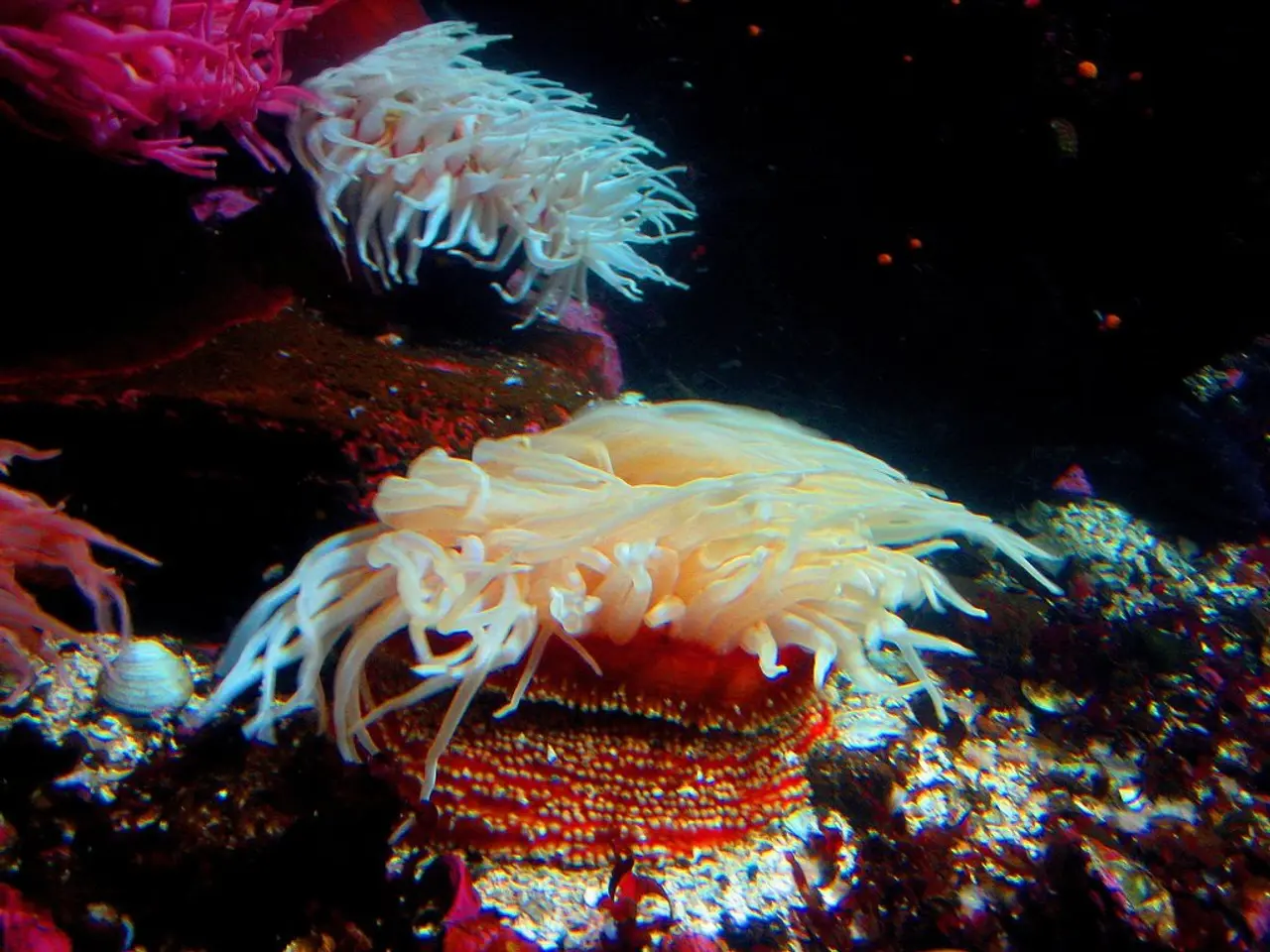Sarangani Bay's Designated Protected Seascape: Potential Blueprint for Philippine National Parks?
In the heart of General Santos, Philippines, lies the Sarangani Bay Protected Seascape (SBPS), a vibrant ecosystem teeming with marine biodiversity, forests, and minerals that support the local population, including indigenous groups relying on traditional farming and coastal resources.
The bay, rich in natural resources, faces environmental challenges such as marine pollution, including micro- and macroplastics, which threaten both biodiversity and the sustainability of economic activities like fishing. To maintain a balance between economic development and conservation, initiatives by the Department of Environment and Natural Resources (DENR) and local community groups promote wildlife protection, biodiversity conservation, and sustainable management of natural resources.
These efforts include regulating fishing and coastal activities to maintain ecosystem health while encouraging eco-friendly tourism and sustainable livelihoods. Cirilo Lagnason Jr., also known as Bugoy, the superintendent of the SBPS, heads a team of 50 people and believes in working with businesses and industries to minimize their environmental impacts and support conservation.
The SBPS, spanning 210,887.69 hectares, is among the largest seascapes in the Philippines. It is home to at least 411 fish, 19 whale and dolphin, five marine turtle, and 25 mangrove species, not to mention a whopping 60 genera of hard and soft coral. One of the most notable reefs within the SBPS is Kamanga Reef, situated in the middle of business and industry, with a 237-megawatt coal-fired powerplant to the right and various aquaculture farms to the left.
The SBPS was proclaimed as a protected seascape in 1996 and legislated as an ENIPAS site in 2018. In 2024, the SBPS collected P62 million, enough to fund various conservation initiatives. The reefs within the SBPS are being tested for potential use in reef restoration projects, with Acropora coral growing the fastest and Porites being the most resilient to siltation and strong currents.
The United Nations Development Fund's Biodiversity Finance Initiative (DENR-UNDP-BIOFIN) is developing a new coral reef insurance system to support disaster response, enhance mitigation and adaptation, and build up each reef's social-ecological resilience. The reef insurance system will be piloted in the Tañon Strait, which covers the waters between Negros and Cebu in the Visayas.
The SBPS is surrounded by active oil and fuel depots, steelworks, factories, power plants, aquaculture facilities, beach and dive resorts, plus wharves for unloading and shipping out goods. Despite these challenges, the SBPS continues to be a focus of ongoing environmental conservation efforts amid pressures from economic activities, with local government units, communities, and environmental agencies collaborating to maintain a sustainable balance through regulation, research, and community engagement.
Manny Pacquiao, world-famous boxer and politician, was born and raised in General Santos City, a key urban center that supports economic development through its port and commercial sectors. Academic research highlights the importance of evidence-based planning to ensure the cultural heritage of indigenous communities and ecological integrity are preserved alongside economic progress.
In summary, the Sarangani Bay Protected Seascape is a testament to the complex balance between economic development and environmental conservation. With the collaboration of local government units, communities, and environmental agencies, the SBPS aims to maintain a sustainable balance through regulation, research, and community engagement, ensuring the preservation of its rich biodiversity and the support of local livelihoods and growth, particularly in fisheries and tourism sectors.
- The Sarangani Bay Protected Seascape, in its mission to maintain a balance between economic development and conservation, also integrates science, such as research on reef restoration and resilience, in its conservation initiatives.
- As the SBPS confronts challenges like climate change, health-and-wellness of the marine ecosystem becomes crucial, making environmental-science, particularly focus on coral reefs, indispensable in its ongoing preservation efforts.




